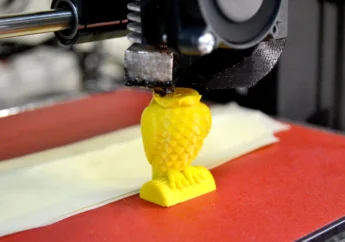20 Troubleshooting Strategies For RYOBI Power Tool Owners
by Ankita Tripathy Technology 01 December 2023

Power tools are indispensable companions for any DIY enthusiast or professional tradesperson. Moreover, the RYOBI power tool has earned its reputation as a trusted brand in this domain. However, even the most reliable tools can encounter issues from time to time.
This comprehensive guide discusses 20 troubleshooting for RYOBI power tools for owners to tackle common problems and keep their equipment running smoothly.
Check Power Source
Before diving into complex troubleshooting, always start with the basics. Ensure your power tool is connected to a functional power source, and consider testing with an alternative outlet or power cord. A simple power issue could be the root cause of various problems.
Inspect The Power Cord And Plug
Examine the power cord as well as plug for any signs of damage, fraying, or exposed wires. If any issues are detected, replacing the cord is crucial to avoid safety hazards. A damaged cord can compromise the tool’s performance and pose a significant safety risk.
Battery Health Check
If using a cordless RYOBI power tool, assess the battery’s charge level and condition. Old or damaged batteries can lead to performance issues. Consider investing in new, high-quality batteries if necessary. Furthermore, a healthy battery is essential for cordless tools to deliver optimal power and runtime.
Clean Air Vents
Over time, dust and debris can accumulate in the air vents, causing overheating and reduced performance. Regularly clean these vents using compressed air to maintain optimal airflow. Adequate ventilation is crucial for preventing the tool from overheating during prolonged use.
Read Also: 4 Hazardous Power Tools and Their Safety Tips to Avoid Injury
Lubricate The RYOBI Power Tool’s Moving Parts
Make sure that all moving parts have ample lubrication. An absence of lubrication might result in increased wear and friction. Thus affecting the tool’s overall efficiency. Follow the manufacturer’s guidelines for recommended lubricants. Proper lubrication enhances the tool’s performance and extends its lifespan.
Inspect Brushes
Brushes in electric motors can wear out over time. Inspect and replace brushes if they show signs of excessive wear. Regular maintenance can extend the life of your power tool. Monitoring as well as replacing brushes prevent motor malfunctions and ensure consistent performance.
Evaluate Switch Functionality
Test the power tool’s switch for any irregularities. If it feels sticky, loose, or unresponsive, it may require proper cleaning, repair, or even replacement. The switch is a critical component for controlling the tool, and any issues with it can impact its usability and safety.
Examine Blades And Bits
Dull or damaged blades and bits can compromise the performance of your power tool. Keep them sharp and replace them when necessary to ensure clean cuts and efficient operation. Sharp accessories not only improve performance but also enhance the safety of the tool.
Adjust Tension And Belts
If your power tool features belts or tension adjustments, make sure they are properly tensioned. Loose belts can slip, affecting the tool’s functionality. Proper tension ensures that power in the RYOBI power tool is transmitted efficiently from the motor to the tool’s moving parts.
Calibrate Depth And Angle Settings
For tools with adjustable depth or angle settings, ensure they are calibrated accurately. Incorrect settings can lead to imprecise cuts and suboptimal performance. Calibration is crucial for achieving accurate and consistent results in various applications.
Monitor Motor Temperature
Overheating is a common issue in power tools. If you notice excessive heat, allow the tool to cool down and investigate potential causes, such as overuse or inadequate ventilation. Monitoring motor temperature prevents damage and extends the life of the tool.
Inspect For Loose Screws And Fasteners
Vibrations from regular use can cause screws and fasteners to become loose. Regularly check and tighten all visible screws to maintain the structural integrity of your RYOBI power tool. Loose screws can lead to misalignments and affect the tool’s overall performance.
Update Firmware Or Software
For tools with electronic components, check for available firmware or software updates. Updating these components can resolve compatibility issues and enhance overall performance. Keeping the tool’s software up-to-date ensures optimal functionality and compatibility with accessories.
Evaluate Trigger Sensitivity
If your power tool has variable speed settings, test the trigger sensitivity. Inconsistent speed control could indicate a problem with the trigger mechanism that requires attention. Proper trigger sensitivity is essential for achieving precision in various applications.
Check For Jammed Mechanisms
Certain power tools, such as saws and drills, can jam if debris or material gets stuck in the moving parts. Clear any jams and inspect for damage before resuming use. Jammed mechanisms can strain the motor and compromise the tool’s effectiveness.
Verify Safety Features
RYOBI power tools often come equipped with safety features. Ensure that these features, such as blade guards and safety switches, are functioning correctly to prevent accidents. Regularly checking safety features is crucial for user protection during tool operation.
Consult User Manual
Always refer to the user manual for specific troubleshooting guidance and maintenance instructions. The manual provides valuable insights into the proper care and usage of your RYOBI power tool. Following the manufacturer’s recommendations ensures optimal performance and safety.
Contact Customer Support
If you encounter persistent issues or are unsure about the troubleshooting process, don’t hesitate to reach out to RYOBI’s customer support. They can provide expert advice and assistance tailored to your specific situation. Customer support is a valuable resource for resolving complex issues and obtaining replacement parts.
Join Online Communities
Engage with fellow RYOBI power tool owners in online forums and communities. Sharing experiences and insights can offer valuable perspectives on common issues and solutions. Online communities provide a platform for learning from others’ experiences. Consequently, it helps in gaining additional troubleshooting tips.
Invest In Professional Servicing
If all else fails or if your power tool requires specialized attention, consider taking it to a professional service center. Trained technicians can diagnose and address complex issues to restore your tool to peak performance. Professional servicing ensures that the tool is thoroughly inspected and repaired by experts.
Conclusion
By mastering these troubleshooting strategies, RYOBI power tool owners can maintain their equipment in top-notch condition, ensuring reliable performance for various tasks. Regular maintenance, attention to detail, and a proactive approach to problem-solving will undoubtedly contribute to a long and productive life for your RYOBI power tools.
Read Also:







































































































